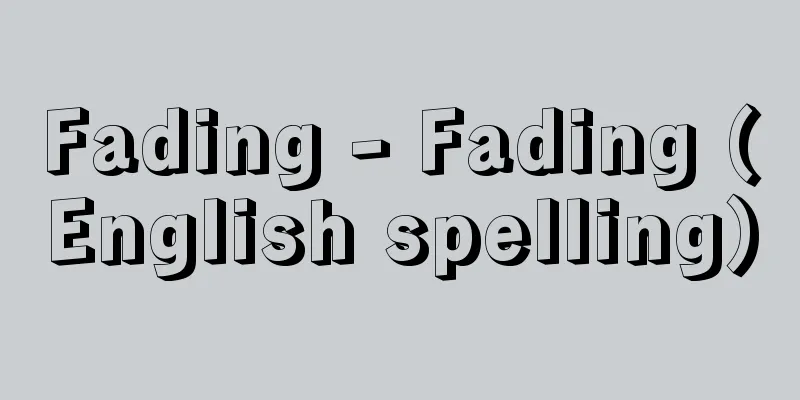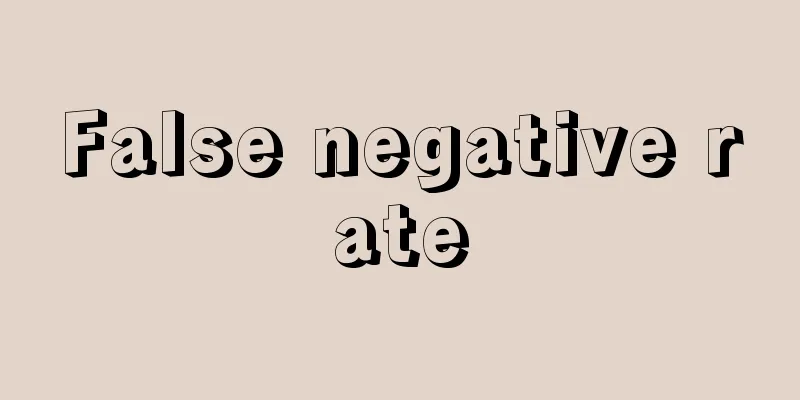Fading - Fading (English spelling)

|
This is a phenomenon in which the strength of radio waves fluctuates rapidly over time. The amplitude of the fluctuations can range from a few decibels to a maximum of 20 decibels, and the period can be as fast as less than one second or as slow as several minutes. Fading can be broadly categorized according to its cause as follows: (1) Interference fading, which occurs when two or more radio waves with different propagation path lengths interfere with each other at the receiving point; (2) Polarization fading, which occurs when the polarization plane of the received wave changes relative to the receiving antenna; (3) Absorption fading, which occurs when absorption by the propagation medium changes; and (4) Jump fading, which is unique to ionospheric propagation and occurs when radio waves can or cannot reach the destination due to slight changes in the ionosphere when communicating close to the jump distance. In addition, classification based on related phenomena includes (1) duct-type fading, which occurs when radio waves propagating through several passages in a radio duct interfere with each other; (2) k-type fading, which occurs when radio wave passages fluctuate due to changes in the atmospheric refractive index (so named because the refractive index fluctuation is considered to be a change in the equivalent Earth radius coefficient k); (3) flutter fading, which fluctuates very quickly and appears in scattering communications and polar communications; and (4) selective fading, which occurs when a specific frequency in the frequency band to be transmitted is strengthened or weakened. Fading with a small range of intensity fluctuation and a short period is called scintillation fading. This is mainly caused by atmospheric fluctuations and is often seen in radio waves arriving from galaxies and radio waves from artificial satellites. In order to reduce fading and improve the quality of received waves, various diversity reception methods are used that combine multiple received signals. [Noboru Wakai] Source: Shogakukan Encyclopedia Nipponica About Encyclopedia Nipponica Information | Legend |
|
電波の強さが時間とともに急速に変動する現象をいう。変動振幅は、数デシベル程度から最大20デシベル程度のものまであり、周期は、1秒以下の速いものから数分程度の遅いものまである。フェージングはその発生原因によって次のように大別される。(1)伝搬通路長の異なる二つ以上の電波が受信点で互いに干渉しあうことにより生ずる干渉フェージング。(2)受信波の偏波面が受信アンテナに対して変動するために生ずる偏波フェージング。(3)伝搬媒質による吸収が変化するために生ずる吸収フェージング。(4)電離圏伝搬に特有のもので、跳躍距離の近くで通信する場合に、電離層のわずかな変化で電波が届いたり届かなかったりするために生ずる跳躍フェージング。 また、関連する現象面からの分類として、(1)ラジオ・ダクト中のいくつかの通路を伝搬する電波が互いに干渉して生ずるダクト形フェージング。(2)大気屈折率の高さによる変化に伴って電波通路が変動して生ずるk形フェージング(屈折率変動を等価地球半径係数kの変化とみなしての命名)。(3)散乱通信、極地通信などの際に現れる非常に変動の速いフラッターフェージング。(4)伝送しようとする周波数帯域のなかで特定の周波数が強められたり弱められたりする結果生ずる選択性フェージング、などがある。また強度変動の幅が小さく、周期の短いフェージングをとくにシンチレーションフェージングという。これは介在する大気の揺らぎに主として起因するものであって、銀河から到来する電波や、人工衛星からの電波にしばしば現れる。 フェージングを軽減し、受信波の品質を改善するため、複数個の受信信号を合成する各種のダイバーシティー受信方式が用いられている。 [若井 登] 出典 小学館 日本大百科全書(ニッポニカ)日本大百科全書(ニッポニカ)について 情報 | 凡例 |
>>: Konstantin Aleksandrovich Fedin
Recommend
Eremo Citrus - Eremo Citrus
…The genus Citropsis , which is thought to be the...
Art Institute of Chicago
Along with the Metropolitan Museum of Art and the...
Kanto Food Democracy Council
...Since March of that year, food delivery delays...
swine
…A domesticated animal of the genus Sus in the fa...
Diamond-back moth
...Distributed almost worldwide, its larvae are w...
Ando [town] - Ando
A town in Ikoma County in the northwest of Nara Pr...
Keian Land Survey Articles
The first land survey articles were enacted by the...
Madder (Western madder) - Madder (English spelling)
A perennial plant of the Rubiaceae family cultivat...
Slot machine - Slot Machine (English)
A gambling machine that uses coins or their subst...
Headlight - Tsumuri no Hikaru
1754-1796 A kyoka poet from the mid to late Edo p...
"Inryoken Diary" - Onryoken Nichiroku
...Diaries of the successive head priests of Roku...
antiquarian bookshop (English)
...the general term for businesses that buy and s...
Taimei [town] - Taimei
A former town in Tamana County in the northwest of...
Italian Canna - Italian Canna
…Ornamental cultivars of canna are the result of ...
Camellia saluenensis (English spelling)
…[Yoshiharu Iijima]. … *Some of the terminology t...









